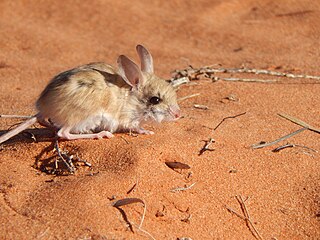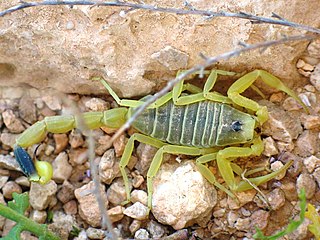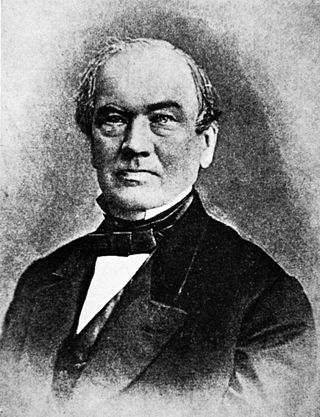
Nemertea is a phylum of animals also known as ribbon worms or proboscis worms, consisting of 1300 known species. Most ribbon worms are very slim, usually only a few millimeters wide, although a few have relatively short but wide bodies. Many have patterns of yellow, orange, red and green coloration. The foregut, stomach and intestine run a little below the midline of the body, the anus is at the tip of the tail, and the mouth is under the front. A little above the gut is the rhynchocoel, a cavity which mostly runs above the midline and ends a little short of the rear of the body. All species have a proboscis which lies in the rhynchocoel when inactive but everts to emerge just above the mouth to capture the animal's prey with venom. A highly extensible muscle in the back of the rhynchocoel pulls the proboscis in when an attack ends. A few species with stubby bodies filter feed and have suckers at the front and back ends, with which they attach to a host.

The dusky hopping mouse, is a small rodent endemic to Australia, inhabiting desert regions characterised by sand dunes. Populations have experienced significant declines since the arrival of Europeans, and continue to be subject to threatening processes. It is currently listed as a threatened species.

The red-tailed hawk is a bird of prey that breeds throughout most of North America, from the interior of Alaska and northern Canada to as far south as Panama and the West Indies. It is one of the most common members within the genus of Buteo in North America or worldwide. The red-tailed hawk is one of three species colloquially known in the United States as the "chickenhawk", though it rarely preys on standard-sized chickens. The bird is sometimes also referred to as the red-tail for short, when the meaning is clear in context. Red-tailed hawks can acclimate to all the biomes within their range, occurring on the edges of non-ideal habitats such as dense forests and sandy deserts. The red-tailed hawk occupies a wide range of habitats and altitudes, including deserts, grasslands, coniferous and deciduous forests, agricultural fields, and urban areas. Its latitudinal limits fall around the tree line in the subarctic and it is absent from the high Arctic. Generally it favors varied habitats with open woodland, woodland edge and open terrain. It is legally protected in Canada, Mexico, and the United States by the Migratory Bird Treaty Act.

A planarian is one of the many flatworms of the traditional class Turbellaria. It usually describes free-living flatworms of the order Tricladida (triclads), although this common name is also used for a wide number of free-living platyhelminthes. Planaria are common to many parts of the world, living in both saltwater and freshwater ponds and rivers. Some species are terrestrial and are found under logs, in or on the soil, and on plants in humid areas.
The metabolic theory of ecology (MTE) is the ecological component of the more general Metabolic Scaling Theory and Kleiber's law. It posits that the metabolic rate of organisms is the fundamental biological rate that governs most observed patterns in ecology. MTE is part of a larger set of theory known as metabolic scaling theory that attempts to provide a unified theory for the importance of metabolism in driving pattern and process in biology from the level of cells all the way to the biosphere.

Corydoras is a genus of freshwater catfish in the family Callichthyidae and subfamily Corydoradinae. The species usually have more restricted areas of endemism than other callichthyids, but the area of distribution of the entire genus almost equals the area of distribution of the family, except for Panama where Corydoras is not present. Corydoras species are distributed in South America where they can be found from the east of the Andes to the Atlantic coast, from Trinidad to the Río de la Plata drainage in northern Argentina. Species assigned to Corydoras display a broad diversity of body shapes and coloration. Corydoras are small fish, ranging from 2.5 to 12 cm in SL., and are protected from predators by their body armor and by their sharp, typically venomous spines.

Paragonimus westermani is the most common species of lung fluke that infects humans, causing paragonimiasis. Human infections are most common in eastern Asia and in South America. Paragonimiasis may present as a sub-acute to chronic inflammatory disease of the lung. It was discovered by Coenraad Kerbert (1849–1927) in 1878.

The green gold catfish is a tropical freshwater fish belonging to the Corydoradinae subfamily of the family Callichthyidae. It originates in inland waters in South America, and is found in the Meta River basin in Colombia.

The Hemiscylliidae are a family of sharks in the order Orectolobiformes, commonly known as longtail carpet sharks and sometimes as bamboo sharks. They are found in shallow waters of the tropical Indo-Pacific.

Euphlyctis ehrenbergii is a species of frog in the family Dicroglossidae. It is endemic to the southwestern Arabian Peninsula in Saudi Arabia and Yemen. It has been treated as a subspecies of Euphlyctis cyanophlyctis, but is now considered as a valid species. The specific name ehrenbergii honours Christian Gottfried Ehrenberg (1795–1876), a German natural scientist.

The Adriatic sturgeon is a species of fish in the family Acipenseridae. It is native to the Adriatic Sea and large rivers which flow in it of Albania, Greece, Italy, Montenegro, Croatia, Bosnia and Herzegovina and Slovenia. Specimens can be seen in several public aquarium, such the Milan Aquarium, Aquarium Finisterrae, Aquarium of the Po, and Oasis of Sant'Alessio in Lombardy.

Peridinium is a genus of motile, marine and freshwater dinoflagellates. Their morphology is considered typical of the armoured dinoflagellates, and their form is commonly used in diagrams of a dinoflagellate's structure. Peridinium can range from 30 to 70 μm in diameter, and has very thick thecal plates.

Leiurus is a genus of scorpion of the family Buthidae. The most common species, L. quinquestriatus, is also known under the common name Deathstalker. It is distributed widely across North Africa and the Middle East, including the western and southern Arabian Peninsula and southeastern Turkey. At least one species occurs in West Africa.

Gustav Woldemar Focke was a German physician and naturalist. He was a nephew of naturalist Gottfried Reinhold Treviranus.

Chlorella vulgaris is a species of green microalga in the division Chlorophyta. It is mainly used as a dietary supplement or protein-rich food additive in Japan.

Opercularia is a genus of freshwater, colonial, sessiline peritrich ciliates. As consumers of free bacteria in the water, several species of Opercularia serve as important indicator organisms in the study of wastewater treatment. Operculariids can be distinguished from other sessile peritrichs by their prominent, non-contractile stalk; peristome without lip; and elongate, horseshoe-shaped macronucleus.

Gyratrix hermaphroditus is a species of rhabdocoel flatworms in the family Polycystididae.
Dalyellia viridis is a species of rhabdocoel flatworm in the family Dalyelliidae.
Rhynchomesostoma rostratum is a species of rhabdocoel flatworms in the family Typhloplanidae.

Typhloplanidae is a family of flatworms in the order Rhabdocoela.

















